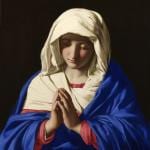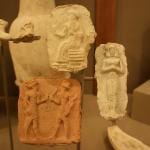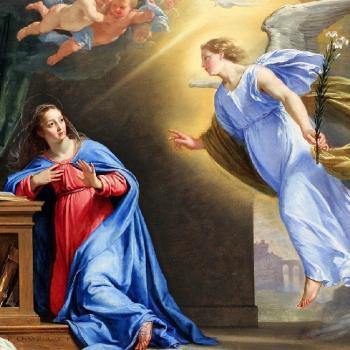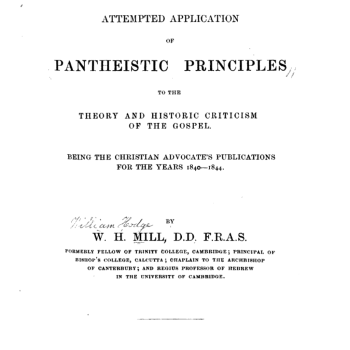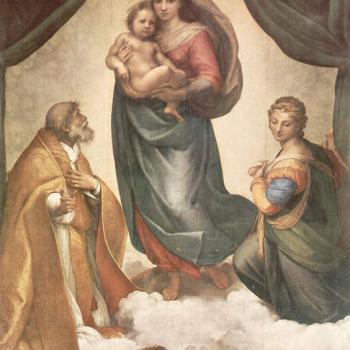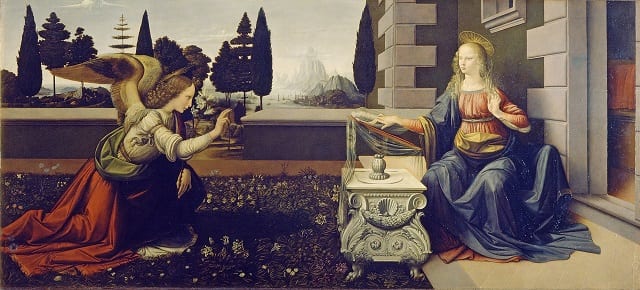
I was challenged on this point by an Orthodox Christian in my discussion group. His words will be in blue.
*****
Sources Used
St. Alphonsus de Liguori, The Glories of Mary, Brooklyn: Redemptorist Fathers, 1931 edition.
Louis Bouyer, The Seat of Wisdom, translated by A. V. Littledale, Chicago: Henry Regnery Co., 1960.
Hilda Graef, Mary: A History of Doctrine and Devotion, vol. 1, New York: Sheed & Ward, 1963.
William Most, Mary in Our Life, Garden City, New York: Doubleday Image, 1954.
***
I should make one comment on comparing the Assumption to the new proposed dogma of Coredemptrix etc. The Assumption as a devotion does not have the major Christological implications that the potential new dogma of Coredemptrix would have. The Assumption can be viewed as a form of piety that does not necessarily have to be dogmatized but does not raise the same number and magnitude of issues as Coredemption does.
Be that as it may (from your perspective), my original point was in response to your contention that new dogmatic Marian proclamations hindered unity and ecumenism. I suggested — just in passing — the Assumption proclamation as a counter-argument, since nevertheless ecumenism has proceeded at an exponential pace since 1950.
In addition, Most Orthodox do not believe that the Assumption or for that matter the Immaculate Conception are dogmas that should have been proclaimed without the consensus of the entire Catholic and Apostolic Church.
We would say the same, of course, about your dogmatic denial of papal supremacy. We can’t stop our legitimate theological and spiritual development simply because Orthodox disagree with us (although we do try to do all we can to work with you). If that were the case, then we would have stopped developing in the 11th century, like you basically did. We believe that the Holy Spirit is still active in expanding the Church’s faith and understanding, just as He always has been. We tried to achieve reconciliation at the Councils of Lyons and Florence, but the masses of the East would allow no such thing (as if they knew more about the filioque et al than the Orthodox theologians). ‘Tis a pity . . .
I hope that we do not want to get into saying that from an Orthodox point of view that Rome became heretical and therefore is no longer genuinely Catholic and Apostolic. Neither do we want to hear from the Catholic side that the Orthodox by not being in direct communion in Rome are not Catholic and Apostolic.
Excellent. It is this negative attitude which I have always strenuously fought. Catholics cannot claim that the Orthodox have lost apostolicity, since we officially accept the validity of your sacraments. The present pope’s very high regard for the Orthodox is well-known.
The development within the Latin Church for the new doctrines of Mary as Coredemptrix and as Mediatrix of ALL GRACES occurred primarily during the 19th and 20th centuries.
It may have developed more rapidly recently, but that doesn’t prove in and of itself that its roots were not planted long ago, and even developed to a considerable degree. I have documented that beyond all doubt from the Church fathers of east and west, Eastern liturgies, and medieval Catholic and Orthodox theologians.
Although quotations from the previous centuries and even from the Patristic age might be cited to suggest some components of these new developments, the fact of the matter is that the development itself is relatively recent.
There has been more rapid development, yes, but I continue to maintain that the patristic “components” are quite explicit and numerous enough (per my compilation) — in fact comparable or more prevalent than that for several doctrines which both our communions (and even Protestants) accept. So if your criticisms hold, they would also apply to some doctrines you yourself uphold.
The case for trying to show that the Patristic age or that Eastern Orthodox writers have provided the direct support for this development is very weak.
This is easily said, but until someone goes down the list of citations in this paper and comments variously on what I have compiled, I will remain utterly unpersuaded of your assertion (and I would hope those reading this are, too).
Stray quotes do not a doctrine much less a dogma make. However, such quotes might indirectly support a devotion of sorts.
And no point-by-point examination of such allegedly “stray” quotes do not a refutation make. Bald assertions of summary are not argument, but rather, unsubstantiated opinion. And this is what I have often complained of getting from the Orthodox. This is what is done with our tons of patristic evidences for the full-blown Roman conception and Tradition of the papacy, too. Sweeping statements . . .
The only really compelling basis within the Roman communion for these new doctrines is ultimately the dogma of Papal Infallibility…
“Only?” Not if the doctrine is well-established in Tradition and the Fathers (even in the ancient liturgies), which I believe to be the case. I haven’t quoted a single pope, though I’ve cited their encyclicals which touch upon the subject.
In my humble opinion, these doctrines were not fully developed until recently…..
This is a fairly straightforward development from the concept of the Second Eve, and of Simeon’s prophecy that “a sword shall pierce your heart.” Depending on what one believes the extent of knowledge of the Blessed Virgin to have been at the Annunciation, it might even be traced in some fashion back to that moment. You could hold that the Blessed Virgin was largely ignorant about Christ and His mission, but I would say that is itself a rank heresy. If she knew about what was to come, then I don’t see how the notions of Mediatrix and Co-Redemptrix are far-fetched or objectionable at all.
I can see how Protestants would object, since they want everything explicit in Scripture, but Orthodox? I don’t get that, except on the grounds of a misunderstanding of development, and an antipathy to raising beliefs to the level of absolutely binding dogma — both common opinions / tendencies among Orthodox. But patristic and medieval Marian thought in the East is very explicit and advanced, often surpassing the development in the West (as demonstrated above).
St. Maximilian Kolbe completed the development of these doctrines in 1923 when he proposed that Mary was the “Spouse of the Holy Spirit” and therefore this explains why she was the mediatrix of all graces. The whole concept that Mary is the Spouse of the Holy Spirit is completely new and has no precedent in either Roman Catholic or in Eastern theology. Therefore, the main foundation for proclaiming Mary as Mediatrix of all Graces and a Coredeemer is ultimately based on a series of developments and assertions that are new doctrinal developments grounded on the premise of the dogma of Papal Infallibility . . .
If the Pope is Infallible within the Latin communion…what does it matter that these doctrines were developed recently or that they are innovations? Does it matter…since the Pope is Infallible anyway? [bolding added]
In another post, my Orthodox friend added:
However, I do not have a conclusion on whether St. Maximilian’s teaching is right or wrong yet. It could still potentially be a correct teaching even if it is unprecedented in Western or Eastern Traditions.
You said the same about the Mediatrix doctrine in general, until I proved otherwise with many patristic and early Orthodox citations (which you have dismissed as insufficient and “very weak”). Now you have come up with a new theory, a more specific assertion, which is contradicted by the biblical and patristic evidence below. You only refute yourself by making sweeping historical statements which can easily be shown false. It’s always good to understate one’s case!
First of all, it is not too much of a stretch to regard Mary (somewhat figuratively) as the Spouse of the Holy Spirit, by virtue of the following passage, connected with the universal Christian belief in the Virgin Birth of Christ:
Luke 1:35 (RSV) And the angel said to her, “The Holy Spirit will come upon you, and the power of the Most High will overshadow you; therefore the child to be born will be called holy, the Son of God.
Secondly, there is much patristic evidence of Mary being regarded as the Bride of Christ, and sometimes as the Bride of God (the Father). All three Persons of the Trinity are God, so how is there any qualitative difference between these relationships and that of Mary being “Spouse of the Holy Spirit?” The Church itself is often regarded in Scripture as the Bride of Christ, and Mary is a symbol of the Church. All of these notions are extremely interrelated.
St. Ephraem of Syria [link] (c. 306-73):
I am also mother / For I bore thee in my womb. I am also thy bride . . . (Hymn on the Nativity, 16, 9-10, in Graef, pp. 57-58)
[in St. Cyril of Jerusalem (d. 386)] “Mary is called ‘bride’, but in a general sense, as Israel was the bride of Yahweh. In a similar sense the word occurs also in many later Greek authors.” (from Mystagogical Catechesis #26 — somewhat doubtful as to authorship: some attribute it to Cyril’s successor, John of Jerusalem (386-417); comment by Hilda Graef, in Graef, p. 68)
Aurelius Prudentius Clemens [link] (348-c. 413):
The unwed Virgin espoused the Spirit (innuba virgo nubit spiritui). (Apotheosis, 571-572 [link] )
Germanus, Patriarch of Constantinople [link] (c. 634-733 or 740):
You alone, Theotokos, are the highest on the whole earth; and we, O Bride of God, bless you in faith . . . (Second Sermon on the Assumption, in Graef, p. 149)
Rupert, Abbot of the Benedictines at Deutz [link] (c. 1080-c. 1135):
[Mary was] the best part of the first Church, who merited to be the spouse of God the Father so as to be also the type of the younger Church, the spouse of the Son of God and her own Son. (On the Trinity, in Graef, p. 228)
Hermann of Tournai [link] (d. after 1147) called Mary the “spouse and mother of God.” (Graef, p. 234)
Aelred of Rievaulx, Cistercian Abbot [link] (1110-1167)
Following St. Bernard of Clairvaux, Aelred writes:
God [the Son] is the Bridegroom, the Virgin the bride, and the angel the best man. (Sermon on the Annunciation, in Graef, p. 249)
Philip of Harvengt [link] (d. 1183)
Not only does the Mother most tenderly embrace the Son, but also the Spouse the Bridegroom. (Commentary on the Canticle, in Graef, p. 255)
St. Albert the Great [link] (c. 1200-1280)
Albert, too, sees her not only as the Mother but as the Bride of the Son, who has received all the gifts of the Spirit and whose inner life was perfectly well ordered. She is the mother of all the faithful, who owe their virtues and merits to her intercession. (Tractatus de Natura Boni, commented on by Hilda Graef, in Graef, p. 274)
Ubertino of Casale, Franciscan [link] (1259-c. 1329)
[Graef summarizes his view:]
At the Annunciation, moreover, the Father took her as his spouse and communicated his paternal fecundity to her, making her ‘the mother of all the elect’ and the ‘mother and associate’ (socia genitrix) of his Son. No grace is given which she does not dispense. (Tree of the Crucified Life of Jesus, in Graef, p. 293)
Direct reference to Mary as the Spouse of the Holy Spirit also exists, at least as early as the 11th century, contrary to the assertion that St. Maximilian Kolbe “proposed” this in 1923, as if it were a novel doctrine at that time:
St. Amadeus of Lausanne, student of St. Bernard [link] (1110-1159)
Your Creator has become your Spouse . . . your Spouse is coming, the Holy Spirit comes to you . . . For you, most beautiful Virgin, have been joined in close embraces to the Creator of beauty, and . . . have received the most holy seed by divine infusion. (Third Sermon on Mary, in Graef, p. 245)
St. Louis de Montfort (1673-1716), in his True Devotion to the Blessed Virgin Mary, §36, speaks of “the Holy Ghost, her Spouse.” (in Most, p. 194)
St. Alphonsus de Liguori (1696-1787)
[I]t was also becoming that the Holy Ghost should preserve her as his spouse.
St. Augustine [354-430] says that ‘Mary was that only one who merited to be called the Mother and Spouse of God.’ [Sermon 208] For St. Anselm [c. 1033-1109] asserts that ‘the divine Spirit, the love itself of the Father and the Son, came corporally into Mary, and enriching her with graces above all creatures, reposed in her and made her his Spouse, the Queen of heaven and earth.’ [De Excell. Virg. c.4]. (St. Alphonsus, pp. 304-305)
Fr. Louis Bouyer summarizes:
The idea that Mary is the Spouse of the Holy Ghost is found, at least adumbrated, in certain writers, e.g., St. Peter Damian [1007-1072] . . . They tell us that Mary can be looked upon as the Spouse of the Holy Ghost in so far as his intervention took the place of the normal process of conception; and they hasten to add that the comparison stops at that point . . . (Bouyer, p. 177)
The only way I could believe any of these new doctrines or proposed dogmas with any confidence is to ask the Mother of God herself to reveal what is true about herself. It will take a miracle…for me to accept these new doctrines. But with God all things are possible.
What about God’s own inspired words in Scripture — if you want to dismiss the Fathers (East and West alike), the Byzantine liturgy, and medieval Orthodox theologians? The doctrines can be supported Scripture before we even get to the issue of the Church fathers’ views. I maintain that both are more than sufficient for a Christian to hold these doctrines. See my articles below.
***
Related Reading
Mary Mediatrix: Patristic, Medieval, & Early Orthodox Evidence [1998]
Mary Mediatrix: A Biblical Explanation [1999]
Mary Mediatrix vs. Jesus Christ the Sole Mediator? [1-30-03]
Mary Mediatrix & the Bible (vs. Dr. Robert Bowman) [8-1-03]
Mary Mediatrix: St. John Paul II & Benedict XVI Clarify [2-19-08]
Biblical Evidence for Mary Mediatrix [11-25-08]
Mary, “Spouse of the Holy Spirit”: Blasphemy? [9-10-15]
Mary Mediatrix: A Biblical & Theological Primer [9-15-15]
Exchange on Catholic Mariology and Mary Mediatrix [12-3-16]
Mary Mediatrix: Close Biblical Analogies [National Catholic Register, 8-14-17]
Mary Mediatrix & Jesus (Mere Vessels vs. Sources) [8-15-17]
***
***
(originally posted in 1998)
Photo credit: The Annunciation (15472), by Leonardo da Vinci (1452-1519) [public domain / Needpix.com]
***


